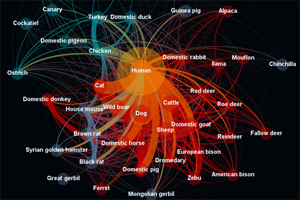BBSRC fights animal diseases with vaccinology network

BBSRC has funded a new multidisciplinary network of veterinary vaccinology experts to help in the fight against animal diseases, some of which have the potential to spread to humans.
The UK Veterinary Vaccinology Network will draw together major UK research players to enhance the uptake of new technologies in order to design, develop and deliver safe and effective next-generation vaccines against new and (re)-emerging diseases.
Vaccines represent one of the most cost effective ways of preventing and eradicating diseases and they are an important tool in the armoury against infectious diseases. With approximately 60% of animal diseases having the potential to cause human infections, these vaccines protect public health as well as enhancing animal welfare and sustainably improving livestock production to meet growing food demands.
While vaccination campaigns have had success, such as the eradication of rinderpest and reducing the usage of antibiotics and other drugs (e.g. aquaculture), new diseases (e.g. schmallenberg), exotic (e.g. avian influenza) and re-emerging diseases (e.g. Porcine Respiratory and Reproductive Syndrome), have highlighted the need to re-think the current methods for developing vaccines.
Building on the UK strength in veterinary science, advances in biotechnology, and the biological revolution in new technologies (such as next generation DNA sequencing and synthetic biology), there are opportunities for researchers to create new veterinary vaccines and increase efficient development pathways for them.
Dr Bryan Charleston, head of the Livestock Viral Diseases Programme at The Pirbright Institute, and Network Coordinator, said: “There is huge potential to improve animal welfare, human health, and the economic performance of the UK livestock industries by developing new vaccines for widespread infectious diseases caused by parasites, bacteria and viruses. The network will facilitate and promote coordination of research in this important field to generate the scientific knowledge and discoveries needed for a step change in veterinary vaccinology.”











